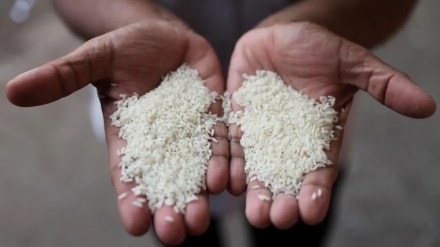By KC Bansal
India has developed the world’s first genome-edited rice varieties aimed at boosting yields and reducing water usage. These are likely to be available for commercial cultivation in the next four to five years. Several other genome-edited crops including mustard are ready for field trials, says KC Bansal
l What is genome-editing technology?
GENOME-EDITING TECHNOLOGY allows precise alterations in the DNA sequence and makes targeted changes in the specific, native genes of an organism to improve a trait. Unlike genetic modification (GM) technology, it does not involve insertion of foreign DNA into the genome of an organism to introduce desirable traits. In 2022, the environment ministry had exempted certain types of genome-edited crops — site-directed nuclease (SDN) 1 and SDN 2—from Rules 7-11 of the Environment Protection Act and from the bio-safety regulations applicable to GM crops to ensure wider use of this technology and accelerate genetic improvement of crops in the country.
DRR Rice 100 (Kamala) has been developed using genome editing technology targeting the Cytokinin Oxidase 2 (CKX2) gene (also known as Gn1a), to increase grain numbers per panicle (plant earhead). The Pusa DST Rice 1 has been developed through SDN1 genome-editing and targets the Drought and Salt Tolerance (DST) gene to improve the plant’s resilience to harsh soil and climate conditions.
l How will the two varieties help increase productivity?
THE TWO VARIETIES — DRR Rice 100 (Kamala) and Pusa DST Rice 1 — have been developed by the Indian Council of Agricultural Research (ICAR) affiliated institutes — Indian Institute of Rice Research (IIRR), Hyderabad and the Indian Agricultural Research Institute (IARI), Delhi, respectively. DRR Rice 100 (Kamala) produces significantly higher number of grains per panicle and matures 20-25 days earlier than the original variety, Samba Mahsuri (BPT5204). The Pusa DST Rice 1, developed over the widely cultivated fine-grain variety called MTU1010, shows 9.66-30.4% increased yields in saline and alkaline soils. Field trials were conducted under All India Coordinated Research Projects for two years. The genome-edited lines fall under two major export segments — long slender non-aromatic and medium slender non-aromatic.
l What are the other benefits?
IN ADDITION TO increased production, the edited lines are capable of a 20% reduction in greenhouse gas emissions, saving 7,500 million cubic meters of irrigation water, and exhibit improved tolerance to drought and salinity stresses. Notably, the DRR Rice 100 (Kamala) variety, owing to its shorter duration, needs less water as well as fertilisers. Its yield is good even with 60-70% of the recommended dose of nitrogenous fertiliser and, consequently reduces greenhouse gas (methane) emissions. This feature, along with its faster maturity, will not only help in mitigating the effects of climate change but also help the farmers prepare the land well for the next crop. Further, the reduced crop duration will help Kamala to escape high temperature stress in the rabi (summer) season in southern India. A significant increase in production and the reduced crop duration combined with enhanced tolerance to drought and salinity will help reduce the area under rice cultivation and also help save water.
l Countries using this technology
GENE-EDITING TECHNOLOGY is being used in over 50 countries for genetic improvement of about 70 crop species. Among the gene-edited crops already commercialised are high-oleic soyabean and pungency-free mustard green in the USA and tomato with increased gamma-aminobutyric acid content and high-starch maize in Japan. Fungal resistant wheat in China, reduced browning banana in the Philippines and non-browning lettuce in USA have been recently approved. In India, besides the two genome-edited rice varieties, work is under way on 40 agri-horticultural crops in ICAR, Council of Scientific and Industrial Research, Biotechnology Research and Innovation Council institutes, State Agricultural Univers-ities, etc. Several gene-edited crops including banana, wheat, tomato, tur and cotton are in the pipeline for field trials. Gene-edited mustard with reduced glucosinolate content specifically in seeds has been developed by BRIC-NIPGR and cleared by the regulatory system for field trials.
l Where and when will these be planted?
THE TWO LINES have been identified for different rice growing zones and states in the country, viz., Andhra Pradesh, Telangana, Karnataka, Tamil Nadu, Puducherry, Kerala (Zone VII); Madhya Pradesh, Chhattisgarh, Maharashtra, (Zone V); and Odisha, Jharkhand, Bihar, Uttar Pradesh, and West Bengal (Zone III). Enhanced production and less water and fertiliser requirement will help reduce the cost of cultivation and enhance farmers’ income. The cultivation of these new varieties over nearly 5 million hectares of the recommended area is expected to produce an additional 4.5 MT of paddy and reduce greenhouse gas emissions by 20% (32,000 tonne). In future, farmers growing these varieties can claim carbon credits. The two lines will be ready for commercial cultivation over the next four to five years.
The writer is chairman, advisory committee, ICAR-NASF CRISPR Crop Network, and former director, ICAR-NBPGR, New Delhi
